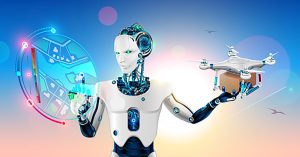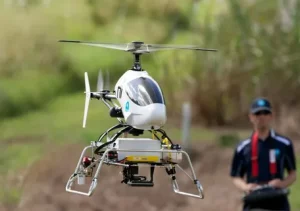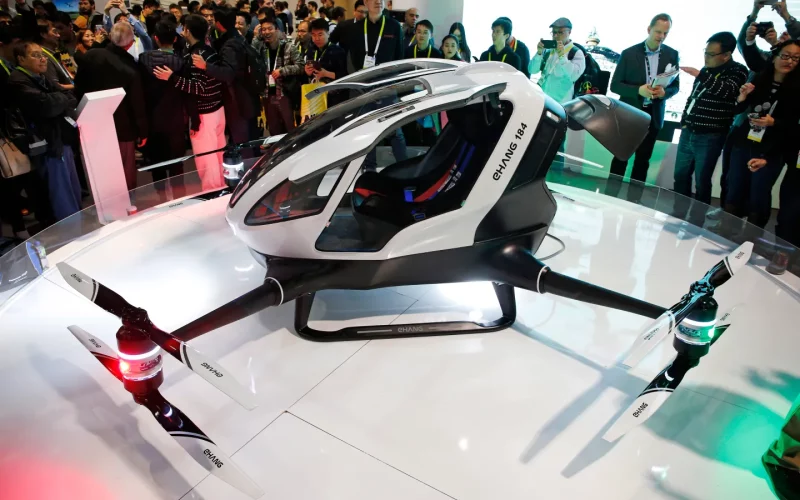In recent years, the landscape of aerial technology has been dramatically transformed by the advent of autonomous drones. These advanced machines are revolutionizing aerial surveillance and delivery systems, offering unprecedented capabilities and efficiencies. As a professional deeply embedded in the field of aerial innovation, I’ve observed firsthand the transformative impact these devices are making. Autonomous drones are not merely enhancing existing operations; they are redefining the very paradigms of service delivery and security monitoring. Their ability to operate independently, guided by sophisticated algorithms and sensor arrays, allows for a level of operational continuity and precision previously unattainable.
Looking ahead, the future of autonomous drones is intrinsically linked to ensuring safety in tomorrow’s skies. As these devices become more prevalent, the complexity of managing airspace and ensuring the safe coexistence of manned and unmanned aircraft becomes a paramount concern. The ongoing evolution of autonomous drone technology is therefore not just about enhancing capabilities but also about integrating advanced safety mechanisms. These systems are designed to navigate the myriad challenges of dynamic environments, ensuring that as drones become a common sight above us, they do so in a manner that prioritizes public safety and airspace integrity.
Design and Engineering of Self-Flying Drones

Exploring the future of autonomous drones in aerial innovation is an endeavor that excites me profoundly. The design and engineering of self-flying drones are at the forefront of this exploration, pushing the boundaries of what’s possible in autonomous aviation. These drones are being engineered with a level of sophistication that redefines possibilities in tomorrow’s skies. Through the integration of cutting-edge technologies such as machine learning, computer vision, and advanced propulsion systems, autonomous drones are being designed to perform a wide range of tasks with greater efficiency and reliability than ever before.
The possibilities these drones present are virtually limitless, from enhancing agricultural productivity through precision farming techniques to transforming the logistics sector with rapid, autonomous delivery services. The engineering challenges in creating drones capable of such feats are substantial, yet the progress made thus far is a testament to the ingenuity and perseverance of those in the field. As we continue to refine and enhance the capabilities of these drones, we are laying the foundation for a future where autonomous aerial vehicles play a central role in our daily lives.
Regulatory Frameworks for Sky Autonomy
The integration of autonomous drones into shared airspace presents unique regulatory challenges. Evolving regulatory frameworks are essential for the successful integration of autonomous drones, ensuring that they can coexist safely and efficiently with manned aircraft and other airspace users. The development of these frameworks requires a collaborative approach, involving industry stakeholders, regulatory bodies, and the broader community to establish rules that balance innovation with safety.
Clear guidelines for the operation of autonomous drones are crucial for achieving sky autonomy. These guidelines must address a range of considerations, from flight authorization and traffic management to privacy and environmental impact. As we move forward, the ongoing dialogue between technology developers and regulators will be key to ensuring that the regulatory landscape evolves in step with technological advancements, enabling drones to fulfill their potential while safeguarding the interests of all airspace users.
The Role of Artificial Intelligence in Drone Navigation

Artificial intelligence (AI) is a cornerstone of modern autonomous drone technology, enabling improved pathfinding and obstacle avoidance capabilities. Through the utilization of AI, drones can navigate complex environments with a high degree of autonomy, making real-time decisions that enhance both their efficiency and safety. The application of AI in drone navigation is a fascinating area of development, one that I find particularly promising for the future of autonomous aerial vehicles.
AI enhances the decision-making capabilities of autonomous drones, allowing them to adapt to unexpected situations and optimize their flight paths dynamically. This not only improves the operational reliability of drones but also contributes to the overall safety of the airspace. As AI technology continues to advance, we can expect to see even greater improvements in autonomous drone navigation, further expanding the range of applications for these versatile machines.
Safety Protocols for Autonomous Drone Operations
Establishing comprehensive safety protocols for autonomous drones is essential to ensuring the safety of the skies. These protocols encompass a wide range of measures, from pre-flight checks and maintenance routines to emergency response procedures. Incorporating AI in autonomous drones enhances predictive safety measures, enabling drones to anticipate and mitigate potential hazards before they pose a risk to operations.
The development and implementation of robust safety protocols are fundamental to building public trust in autonomous drone technology. By demonstrating a commitment to safety at every level of operation, we can pave the way for the wider acceptance and integration of drones into our airspace. This, in turn, will unlock the full potential of these technologies to benefit society in myriad ways.
Future Applications of Autonomous Drones
The potential applications of autonomous drones are vast and varied, revolutionizing sectors ranging from agriculture to emergency response. In precision agriculture, for example, drones are enabling sustainable farming practices by providing detailed aerial data that allows for the optimization of crop health, yield, and resource use. This represents a significant leap forward in our ability to produce food more efficiently and with a lower environmental impact.
In the realm of emergency response, autonomous drones are enhancing our capability to respond to disasters and emergencies with rapid, real-time surveillance. By providing immediate aerial views of affected areas, drones can help coordinate rescue operations, assess damage, and deliver critical supplies to inaccessible regions. The speed and agility of autonomous drones make them invaluable tools in saving lives and mitigating the impact of catastrophic events.
Challenges Facing the Deployment of Autonomous Drones

Despite the promising advancements in autonomous drone technology, several challenges remain in their widespread deployment. Regulatory hurdles are a significant barrier, with current frameworks often struggling to keep pace with the rapid evolution of drone capabilities. Ensuring that drones can be integrated safely and effectively into existing airspace systems requires ongoing dialogue and adaptation of regulatory policies.
Technical reliability also remains a pivotal challenge for the deployment of autonomous drones. Ensuring consistent performance in a wide range of environmental conditions is crucial for building trust in these systems. As the technology continues to mature, addressing these reliability concerns will be key to unlocking the full potential of autonomous drones for commercial, industrial, and public service applications.
Ethical Considerations in the Use of Autonomous Drones
The deployment of autonomous drones raises important ethical questions, particularly in the areas of surveillance and privacy. The ability of drones to collect and analyze vast amounts of data can lead to concerns about how this information is used and who has access to it. Establishing strict regulatory frameworks globally is essential to ensure that the use of drones aligns with ethical standards and respects individuals’ rights to privacy.
As we navigate the complexities of integrating autonomous drones into our daily lives, it is imperative that we do so with a keen awareness of the ethical implications. By fostering an open dialogue about the benefits and challenges of drone technology, we can work together to ensure that these powerful tools are used responsibly and for the greater good.










